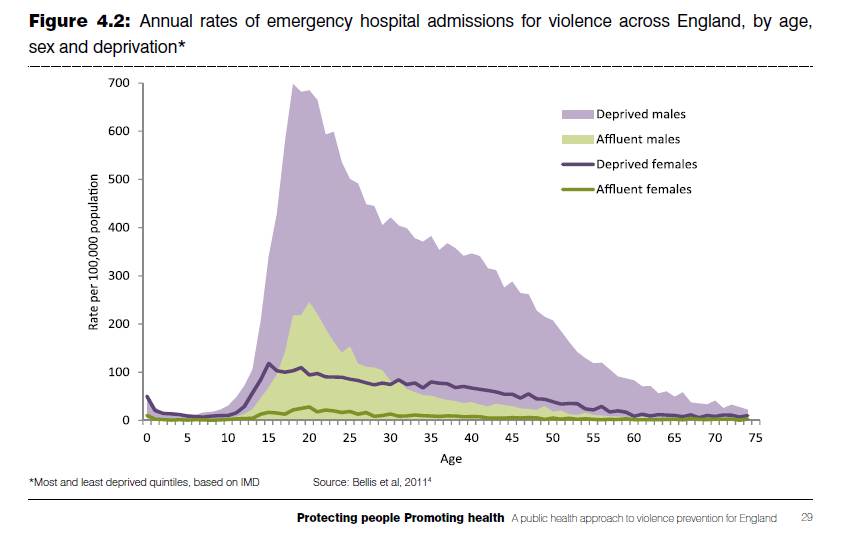 “Prevention is the cheapest and most effective way to deal with crime – everything else is simply picking up the pieces of failure that has gone before.” Prime Minister Cameron in the UK on intelligent crime policy. In the same week, good doctors collaborating with the World Health Organization show the costs of more of the same and the potential dividends to victims and taxpayers of intelligent investment in prevention.
“Prevention is the cheapest and most effective way to deal with crime – everything else is simply picking up the pieces of failure that has gone before.” Prime Minister Cameron in the UK on intelligent crime policy. In the same week, good doctors collaborating with the World Health Organization show the costs of more of the same and the potential dividends to victims and taxpayers of intelligent investment in prevention.
Unfortunately Mr. Cameron´s policy statement lacks the tough and intelligent use of taxpayers money to stop violence and crime. He focuses only on ¨intelligent use of prison¨ and hope for effective rehabilitation programs . Mr. Cameron overlooks the vast amount of proven knowledge about what are the most cost effective ways to stop victimization. To quote the good doctors …
¨Over the last decade, an increasing body of research, intelligence and experience has developed our understanding of the wide range of risk factors that can contribute to violence (chapter 4) and what can be done to prevent it (chapter 5). We now have a sound knowledge of how violence affects us and which groups are most at risk, as well as strong evidence from around the world of the effectiveness and cost-effectiveness of a range of violence prevention strategies.¨
These ways are ¨secondary¨ prevention that is actions that help at risk youth, families and neighborhoods avoid crime. The good doctors stress how much violence begets violence from child abuse leading to youth violence and so on. So prevention breaks the cycle of violence.
Successfully stopping crime in the first place also reduces demand for police services and so enables rational reductions in reactive policing that he wants. (see for instance posts on my website). They will also reduce the numbers of persons behind bars – another cost saving – we hope he wants! According to the good doctors, they will reduce costs to health services.
Among its key points
1. The Challenge is clear
There are 2.5 million violent incidents in England and Wales each year. They result in 300,000 emergency department attendances and 35,000 emergency admissions into hospital (chapter 2). Violence is estimated to cost the NHS £2.9 billion every year. This figure underestimates the total impact of violence on health as, for instance, exposure to violence as a child can increase risks of substance abuse, obesity and illnesses such as cancer and heart disease in later life. The total costs of violence to society are estimated at £29.9 billion per year (chapter 3). Violence shows one of the strongest inequalities gradients with emergency hospital admission rates for violence being around five times higher in the most deprived communities than in the most affluent (chapter 4).
2. Intelligent solutions are clear
By adopting a public health approach violence can be prevented. A range of different interventions throughout the life course can reduce individuals’ propensity for violence, lower the chances of those involved in violence being involved again and ensure that those affected by violence get the support they require (chapter 5). In many cases health economic analyses are already available that demonstrate significant cost savings where violence prevention programmes have been established (chapter 5). Some areas in England are already employing these measures. If other areas followed suit financial and health benefits would be substantial. Data on violence are increasingly available from health services, police, other routine sources and a variety of surveys. These identify individual and community level risk and protective factors. Such data can be used to target interventions at those most at risk and monitor progress (chapter 2). The inclusion of violence indicators in the national Public Health Outcomes Framework (chapter 6) means robust, comparable measures of trends in violence will be available for all localities.
3. Intelligent policy to reduce violence for England and Wales with implications elsewhere …
The recommendations include changes to public health and other public structures to help facilitate violence prevention. The establishment of Public Health England and locally accountable health and wellbeing boards; the movement of public health teams into Local Authorities and the election of police and crime commissioners, can be used to create multi-agency plans for violence prevention in all localities. Such plans should use the strong evidence base behind public health approaches to violence prevention to ensure public sector, private sector and community assets all contribute to violence prevention and benefit from less violence (chapter 6).
Thank you to the World Health Organization for sharing the report.
http://twitter.com/WHOviolencenews
http://www.who.int/violence_injury_prevention/
See a Canadian perspective on Needing Investment in Prevention, Not More Jails.


